Geology

The planet's largest carbon reservoir is not in permafrost or the Amazon rainforest, it is hidden in the Earth's inner core, according to what the authors of a new study in PNAS call a "provocative and speculative" finding.
As much as two-thirds of Earth's carbon. They suggest that iron carbide, Fe7C3, provides a good match for the density and sound velocities of Earth's inner core under the relevant conditions. The model, if correct, could help resolve observations that have puzzled researchers for decades but they are not claiming it is more than it is.
"The model of a carbide…
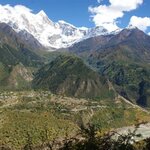
An ancient, deep canyon buried along the Yarlung Tsangpo River in south Tibet, north of the eastern end of the Himalayas, has been discovered by geologists who say this ancient canyon--thousands of feet deep in places--effectively rules out a popular model used to explain how the massive and picturesque gorges of the Himalayas became so steep, so fast.
Geologists use tools such as GPS and seismology to study crustal deformation that is taking place today but for changes that occurred millions of years ago, rivers become a main source of information. They leave behind geomorphic…

Time is relative. What is a long time to humans is nothing to a mountain. Like humans, mountains usually burst on the scene, then they stand tall and finally age wears them down and their sharp features soften and they become grow shorter and rounder.
Not all mountains, though. The Gamburtsev Mountains in the middle of Antarctica look quite young for their age. Though the Gamburtsevs were discovered in the 1950s, they remained unexplored until government budget increases and few things left above ground to explore led scientists to fly ice-penetrating instruments over the mountains…

Tectonic plates, which make up the outer layer of the earth, are rigid. It is giant layers of rock, after all. But that is a bit of a simplification. They are not rigid and don't fit together as nicely as we imagine, according to a new paper in Geology by Corné Kreemer, an associate professor at the University of Nevada, Reno, and his colleague Richard Gordon of Rice University, which quantifies deformation of the Pacific plate and challenges the central approximation of the plate tectonic paradigm that plates are rigid.
Using large-scale numerical modeling as well as GPS…
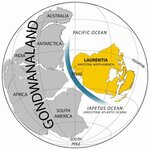
The "Cambrian explosion," the rapid diversification of animal life in the fossil record 530 million years ago, has by necessity remained the subjective of speculation. We know it happened, but no idea why, we simply know we wouldn't be here without it.
The sudden burst of new life was called "Darwin's dilemma" because it appeared to contradict Sir Charles' gradual evolution by natural selection. The surge in rapid evolution led to the sudden appearance of almost all modern animal groups. Fossils from the Cambrian explosion document the rapid evolution of life on Earth but beyond that it is…
By Simon Redfern, University of Cambridge
How is it that Earth developed an atmosphere that made the development of life possible? A study published in the journal Nature Geoscience links the origins of Earth’s nitrogen-rich atmosphere to the same tectonic forces that drive mountain-building and volcanism on our planet. It goes some way to explaining why, compared to our nearest neighbors, Venus and Mars, Earth’s air is richer in nitrogen.
The chemistry of the air we breathe is, at least partly, the result of billions of years of photosynthesis. Plant life has transformed our world from one…
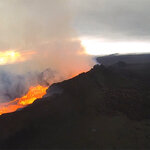
Massive amounts of erupting lava have connected with the fall of civilizations, the destruction of supercontinents and dramatic changes in climate and ecosystems.
Since August 31st, Bárðarbunga volcano in central Iceland has been spewing spectacular amounts of lava. A new paper finds that high mantle temperatures miles beneath the Earth's surface are essential for generating such large amounts of magma - and Bárðarbunga volcano lies directly above the hottest portion of the North Atlantic mantle plume.
"From time to time the Earth's mantle belches out huge quantities of…
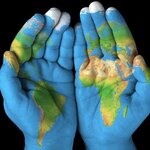
How many continents can you count on one hand? Image: Chones
By Nick Rawlinson, University of Aberdeen
From the 1950s until recently, we thought we had a clear idea of how continents form.
Most people will have heard of plate tectonics: moving pieces on the surface of the planet that collide, pull away or slide past one another over millions of years to shape our world.
There are two types of crust that sit on top of these plates: oceanic crust (that beneath our oceans) and continental crust (that beneath our feet). These move across the surface of the Earth at rates of up to 10cm per year.…

Since December 2004 there have been 18 quakes of 8.0 or greater on the moment magnitude (Mw) scale – a rate more than twice that seen from 1900 to mid-2004.
Some of that difference could be due to unprecedented advances in technological and scientific capacity to detect earthquakes. Like the distance of Babe Ruth's homeruns, anecdotes about past earthquakes have the mist of legend shrouding them, but modern earthquakes have a variety of ways they can be understood - and that helps recalibrate risk for future earthquakes.
The great Sumatra-Andaman earthquake of Dec. 26, 2004,…
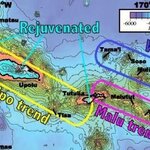
A study of Samoan volcano hotspots has found evidence of the planet's early formation still trapped inside the Earth.
Volcanic island chains such as Samoa can contain ancient primordial signatures from the early solar system that have survived for billions of years. To make their determination, the researchers utilized high-precision lead and helium isotope measurements to unravel the chemical composition and geometry of the deep mantle plume feeding Samoa's volcanoes.
In most cases, volcanoes are located at the point where two tectonic plates meet, and are created when those…